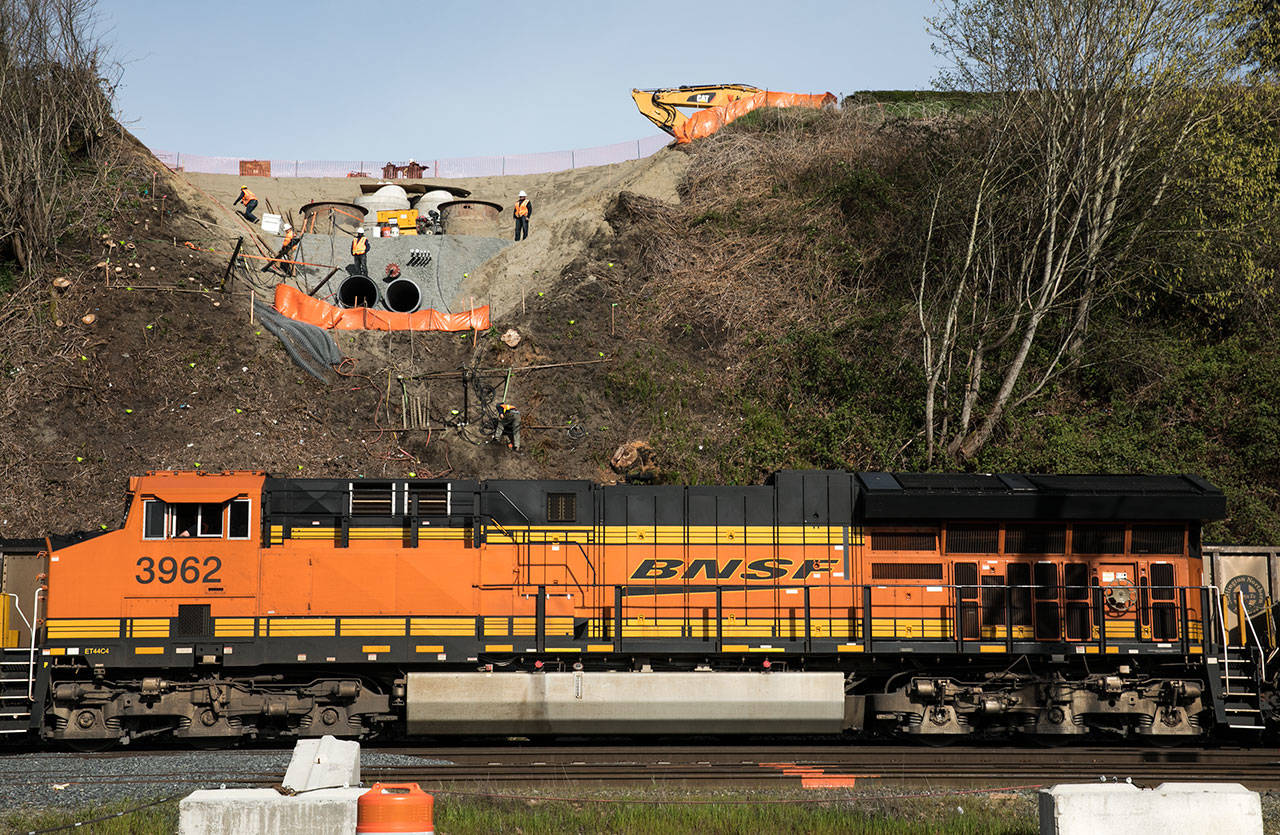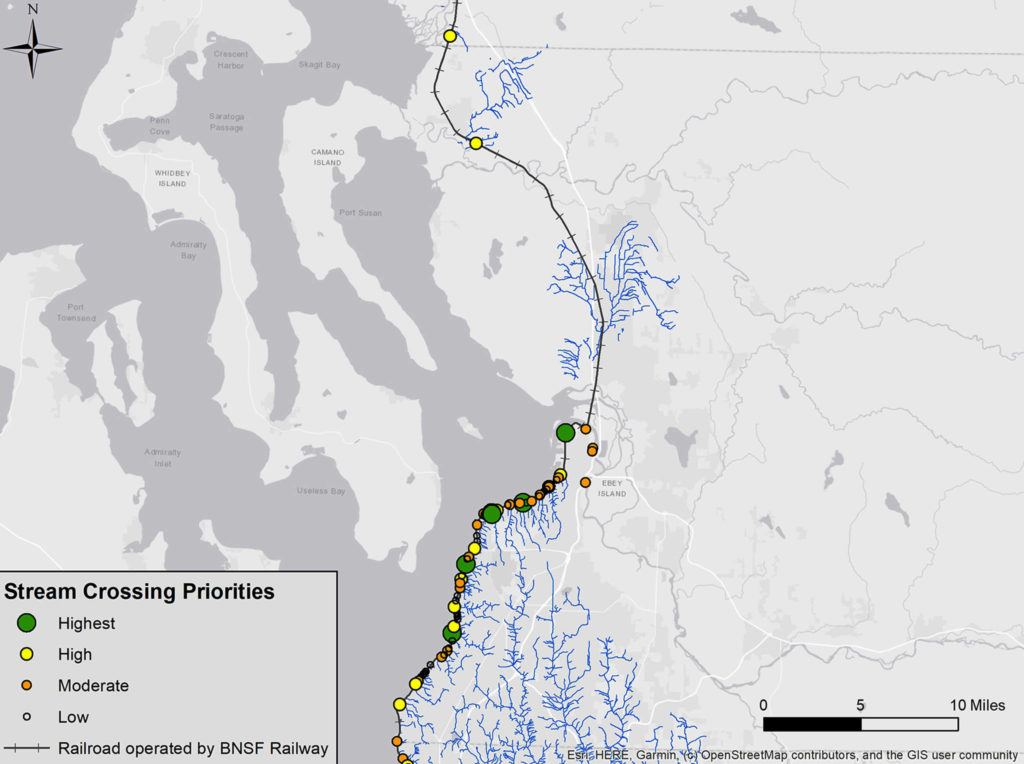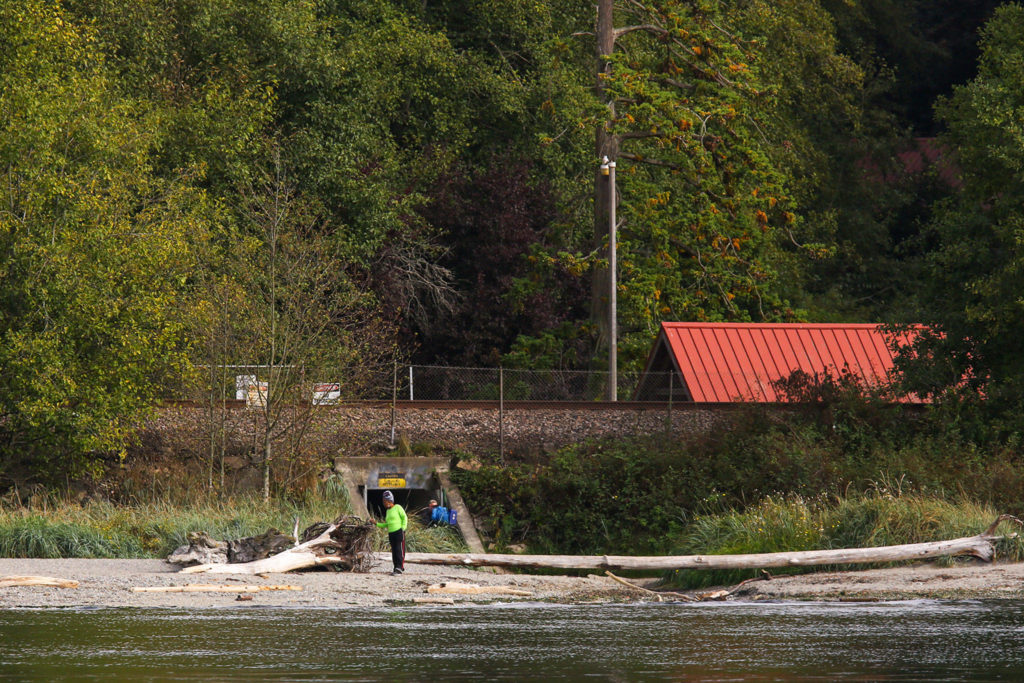EDMONDS — Much like its human residents, Snohomish County’s chinook salmon are trying to navigate the 73 miles of BNSF railway tracks trimming Puget Sound to access the water.
For young fish, a natural nursery habitat at the spot where streams meet the sound is often blocked by pipes that route waterflow under the tracks.
A collection of state and federal agencies just wrapped up a year-long effort to prioritize nearly 200 streams and determine where projects to increase fish access would have the most bang for their buck.
Of the 74 stream crossing sites in Snohomish County, six are considered a high priority. They include spots at Meadowdale Park, Japanese Gulch and Boeing Creek.
Most of the railway along Puget Sound was built in the 1890s to early 1900s, said ecologist Phil Bloch, who helped manage the project.
It was originally constructed with trestles, but they converted to piped crossings sometime before World War II.
Chinook are a large salmon that spawn in rivers, Bloch said. Babies hatch in the gravel then make their way toward the Sound. After they arrive, recent research shows they often duck back into stream habitats while they grow and get ready to take on the marine environment.
“The fish are telling us ‘these are habitats we like,’ and we’re trying to get them back to these habitats,” Bloch said.
Researchers looked at the quality of habitat at stream crossings and the likelihood juvenile chinook will use it. They grouped sites into tiers, with 17 sites from the greater Puget Sound listed as high priority. Of those, six are in Snohomish County.
“That’s a big concentration,” project manager Paul Schlenger said.
The railway is willing to take the results and invest in changes, Bloch said.
The ranking system will allow the company to prioritize which stream crossings it’ll focus on.
“We want to be good stewards of the environment and data from studies like these helps with those efforts,” company spokesperson Courtney Wallace said.
The project was funded by the Environmental Protection Agency and administered by the state Department of Fish and Wildlife, with in-kind support from the Tulalip Tribes.
Moving forward, BNSF can address issues at some of the sites through maintenance. Other crossings will require standalone projects with outside funding.
Organizations could also use the sites for mitigation credit.
“This has all been sort of focused toward implementation,” Schlenger said. “We want to make sure it leads to actually changing some things and improving the habitat.”
Julia-Grace Sanders: 425-339-3439; jgsanders@heraldnet.com.
Talk to us
> Give us your news tips.
> Send us a letter to the editor.
> More Herald contact information.



























